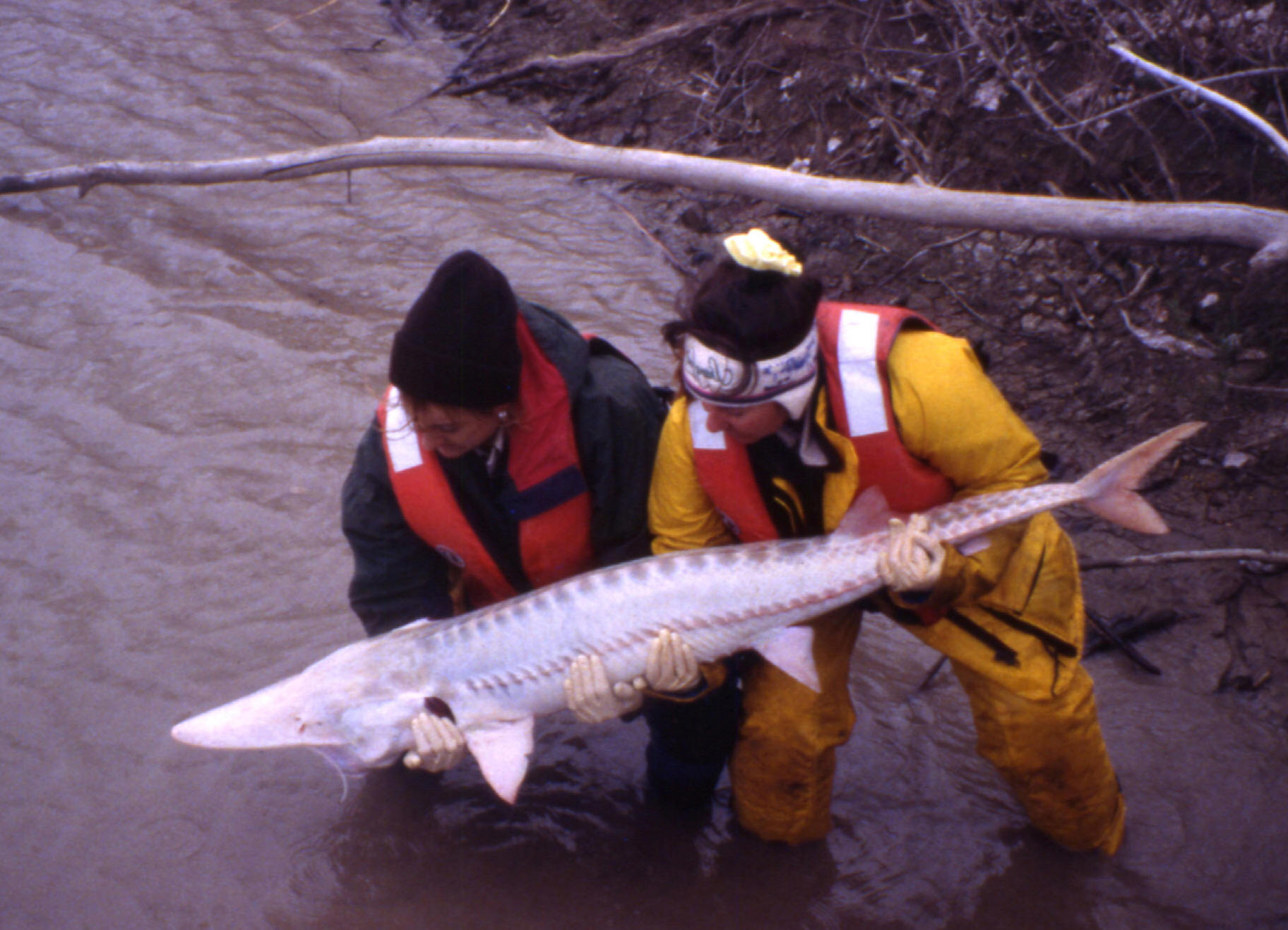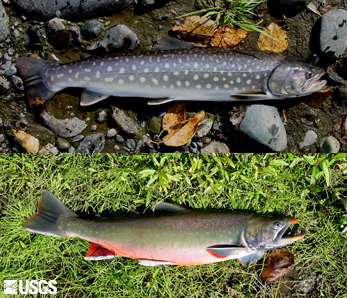- Home
- About S&T
- Taxa/Organisms
- Ecosystems
- Issues
- Methods & Tools
- Reports & Publications
- Location
- Search
Publisher: USGS | Science Center: Columbia Environmental Research Center (CERC, Columbia) | Format: URL
www.cerc.usgs.gov — This research project focuses on the endemic nature of the Pallid sturgeon (Scaphirhynchus albus) and shovelnose sturgeon (Scaphirhynchus platorynchus) and their reproductive status. Its objectives are to develop methods to use endoscopy and ultrasonic imagery to visually observe the gonads of adult and immature shovelnose and pallid sturgeon, as More...

2008 | Publisher: Other (RSC Publishing, Journal of Environmental Monitoring) | Format: URL
www.rsc.org — Environmental contaminant and biomarker monitoring data from major U.S. river basins were summarized for black bass (Micropterus spp.) and common carp (Cyprinus carpio) sampled over a nine year period. Cumulative frequency distributions revealed taxon differences for many organochlorine residue concentrations, elemental contaminant concentrations, More...

2008 | Publisher: USGS | Science Center: Fort Collins Science Center (FORT, Ft. Collins) | Format: URL
www.fort.usgs.gov — San Acacia Dam is located in a reach of the Rio Grande that has been designated as critical habitat for two endangered species, the Rio Grande silvery minnow (Hybognathus amarus) and the southwestern willow flycatcher (Empidonax traillii extimus). Presently, Rio Grande upstream from the dam is used to convey irrigation water to the Socorro main More...

May 4 2007 | Publisher: Other (Springer New York) | Format: URL
www.springerlink.com — This project is an evaluation of three potentially nonlethal alternatives to fillet sampling for the determination of mercury (Hg) concentrations in smallmouth bass (Micropterus dolomieu) to monitor mercury concentrations in smallmouth bass (micropterus dolomieu) from six sites in southern Missouri were captured by electrofishing. Blood samples More...

September 2006 | Publisher: USGS | Format: URL
pubs.usgs.gov — This report documents the spatial trends in the concentrations of accumulative contaminants and assesses the contaminant effects on the fish from the Colorado River Basin.

June 2001 | Publisher: USGS | Science Center: Upper Midwest Environmental Sciences Center (UMESC, LaCrosse) | Format: URL
www.umesc.usgs.gov — This report describes an electronic database containing 474 annotated citations that are relevant to fish passage through dams in large temperate floodplain rivers. The goal of this project was to survey the literature to help define the potential ecological consequences of restricted fish passage through dams in the Upper Mississippi River System More...

2001 | Publisher: USGS | Science Center: Upper Midwest Environmental Sciences Center (UMESC, LaCrosse) | Format: URL
www.umesc.usgs.gov — Research at the Upper Midwest Environmental Center, which gathered detailed observations on tree swallow nesting success and contaminant concentrations in 1998-2000, to guide EPA and the U.S. Fish and Wildlife Service in effectively managing the risk of chemical contaminants to wildlife and the environment.

Publisher: USGS | Science Center: Leetown Science Center (LSC, Kearneysville) | Format: URL
www.lsc.usgs.gov — Freshwater bivalves, which are among the most threatened animals in North America, present significant challenges to conservation biologists that attempt to maintain ecological and evolutionary processes within and among populations. Effective management of this rare fauna is often complicated because inadequate information exists for More...

Publisher: USGS | Science Center: Western Fisheries Research Center (WFRC, Seattle) | Format: URL
wfrc.usgs.gov — This U.S./Russian collaboration will investigate genetics and life histories of Kamchatka Peninsula rainbow trout and steelhead (O. mykiss), and Dolly Varden, white-spotted, and arctic char (S. malma, S. leucomaensis, and S. alpinus, respectively). Both anadromous and resident forms of these generally occur in Kamchatka rivers that are free from More...

Publisher: USGS | Science Center: Western Fisheries Research Center (WFRC, Seattle) | Format: URL
wfrc.usgs.gov — This is a research summary who's project objectives are to: 1) Coordinate watershed stakeholders in order to guide the implementation of watershed restoration actions that are consistent with stakeholder objectives, 2) Monitor physical habitat conditions and natural production of juvenile, smolt, and adult steelhead in the Wind River sub-basin, More...

Publisher: USGS | Science Center: Western Fisheries Research Center (WFRC, Seattle) | Format: URL
wfrc.usgs.gov — The goal of this work is to provide information to aid state, federal, and tribal managers in efforts to protect and restore the white sturgeon (Acipenser transmontanus) in the Columbia River Basin Construction and operation of dams on the Columbia and Snake rivers for hydroelectricity, navigation, and irrigation have adversely affected white More...

Publisher: USGS | Science Center: Western Fisheries Research Center (WFRC, Seattle) | Format: URL
wfrc.usgs.gov — Pacific lamprey (Lampetra tridentata) populations are in decline or have been extirpated from much of their historical range in the Columbia River Basin. Evidence collected for sea lampreys suggests they may not home to natal streams, but instead may use their olfactory ability to detect the presence of larval and adult lampreys as discrete More...
